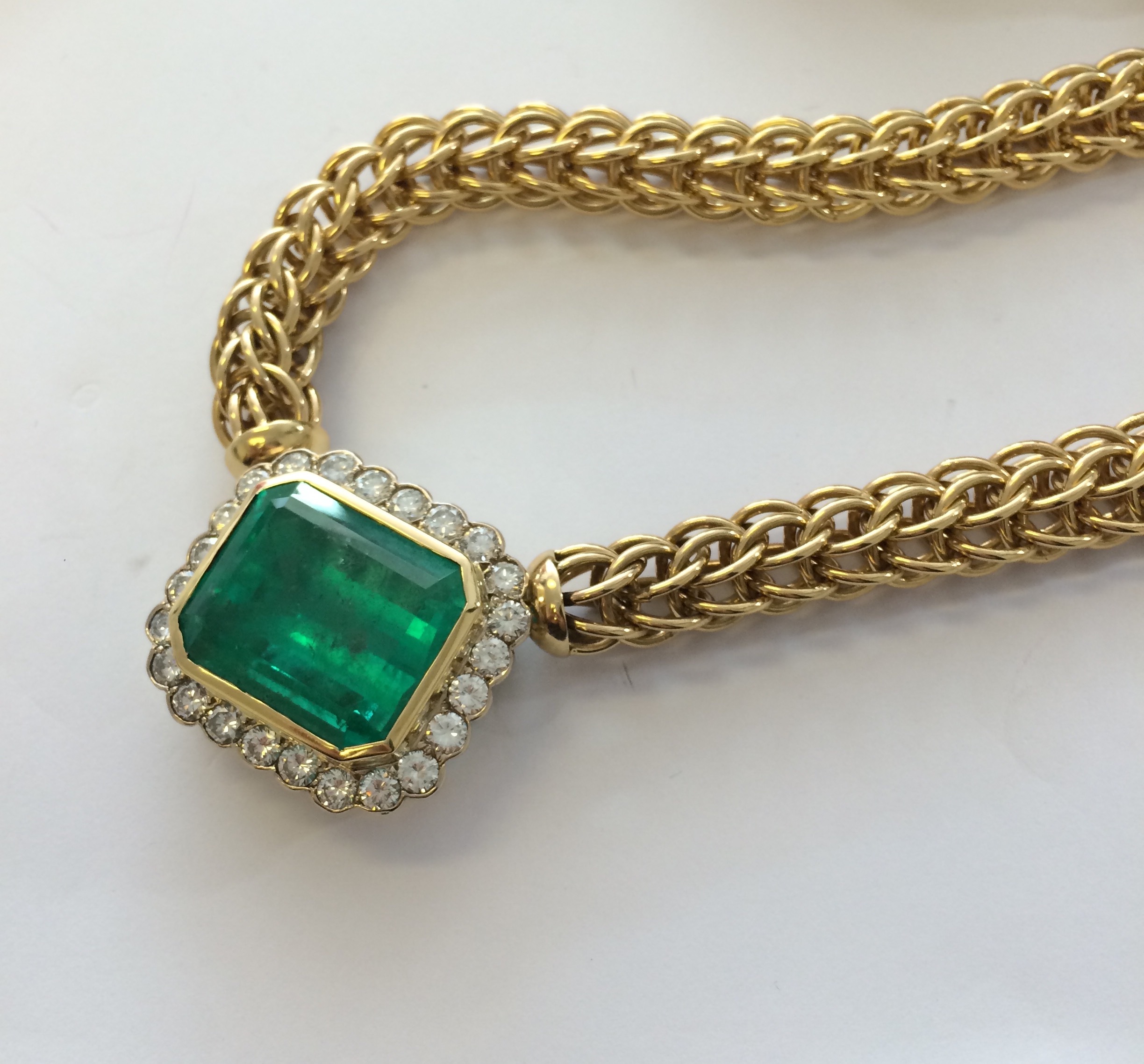
All that Glitters is Not Gold
11.11.15
We have to admit that every time we see the colour green we associate it with an Emerald.
Our brain is so used to it, that every time we see a green stone we believe it's an Emerald. Well, I'm sorry to break it to you, but this is not always true. We have to take in consideration that there are other green gemstones out there, such as: Peridot, Green Tourmaline, Green Sapphire, Demantoid Garnet and Tsavorite, among others. But at least of what we are certain is that an Emerald depending on its origin and beauty can end up costing thousands of dollars per carat!!! Therefore, it's really important to know that what we have in our hand is an authentic Emerald. And thanks to gemmology we are able separate a real gemstone from a synthetic or a simulant.
Below, you can see a beautiful necklace, apparently set with an Emerald (due to its green colour), surrounded by brilliant cut white stones, and all gemstones are set in 18K Yellow Gold.

As a first step we proceeded to check the white stones. Under the microscope we were able see that all of them had sharp facet junctions, no scratches and they had some inclusions very similar to those of a diamond. After a series of other tests the final one being the thermal test, everything indicated that the stones surrounding the “Emerald” were actually DIAMONDS!!!
After resolving the first mystery we carried on checking the green stone. Is it an Emerald or not?
We cleaned the stone and we took the Refractive Index, which came out to be between 1.54 and 1.55, but in fact we were expecting to get a value between 1.57 and 1.58. So which stone has the RI that we had obtained? QUARTZ!!!
We were still unsure so we checked the stone under the microscope (Fig 1 & 2). We were able to see inclusions, and yes, some of them did look like Emerald inclusions. However, on further inspection, guess what we have found? GAS BUBBLES!!!

Fig.1 Gas Bubbles viewed from the crown. Magnified 40X

Fig. 2 Gas Bubbles viewed from the crown- Magnified 40X
It did'nt add up. Gas bubbles don't appear on their own in gemstones with a well-defined crystal structure, such as quartz and emeralds. However they do appear in amorphous substances such as glass (Moldovite and Obsidian).
The question was, what did we have in front of us? Let’s do a recap: quartz, green colour and gas bubbles… everything indicated that this was a quartz triplet.
For all of those that are not familiarised with the triplets we will explain it now.
As we have mentioned before, Emeralds are one of the most expensive gemstone in the market, therefore many unscrupulous people try to decieve the end user, who end up paying huge amounts of money for something that in reality should have been a couple of dollars.
So how do people manage to pull this off? Some green gemstones can be sold as emerald simulants. However, many aren´t that cheap, so they decide to make triplets using low-cost materials. A triplet is an assembled stone made of three substances glued together.
In our case we had a quartz triplet. So they have taken a cheap stone, such as rock crystal quartz, with few inclusions to simulate those found in Emeralds. But how does one manage to find a quartz with an emerald green colour? Green quartz exists. However it doesn´t have that special and unique colour. In order to achieve that emerald look, the quartz is cut in two (crown & pavilion) and then glued together with green cement, forming a triplet. Because everything has been glued, gas bubbles were formed in between the layers and that´s what we could clearly see under the microscope.
So to all of you out there, who fancies an emerald, don’t be afraid to ask your local jeweller for a report issued by a reputable and independent gem lab, such as IGR London.
Written by Lucia




